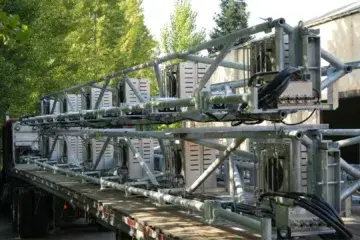Increasing numbers of winter steelhead have started arriving in Oregon’s rivers, and so far this winter season, Willamette Falls has recorded 596 steelhead on their migration upriver to spawn. From the historically low steelhead runs in 2017, Oregon is now hoping that numbers will improve this year.
The Oregon Department of Fish and Wildlife (ODFW) website states that measures have been taken to address the decline in numbers since 1997, the year in which they established the Oregon Plan for Salmon and watersheds to decrease the gap between current and historical averages. The website shows that at the same time, 13,326 miles of Oregon’s rivers and streams, together with 30 lakes did not meet the water quality standards that supported drinking water, recreation and fisheries. The website also states many populations of chinook, cho and chum, were also at a fraction of their previous levels.
According to the Willamette Falls Annual Fish Passage Counts, the historic low population count last year in 2017 recorded only 822 steelhead returning to their winter spawn, down from the average of 5,778. Although Upper Willamette River steelhead are on the federal threatened species list, this dramatic decline has added to the local community’s fear that Willamette steelhead could become extinct. The steelhead population is now very small in comparison to the first winter run in 1971, when 26,647 were recorded.
Many factors combined to reduce the number of anadromous fish returning to Oregon streams to spawn, factors that resulted from lack of understanding of how human activities affect salmonids, including harvest, hatcheries, hydropower and habitat changes. But natural factors such as predators and ocean conditions have a part to play, the Oregon Plan for Salmon and Watershed concludes.
Many local communities rely on steelhead, salmon and other fish populations to sustain business, and the rivers in Oregon have supported employment, food and recreation.
“The Willamette winter steelhead fishery has yet to get going in earnest” states the Recreational Fishing Report for the Northwest Zone on the ODFW website, “but improving conditions should give anglers the break they’ve needed to go effectively after those winter fish”.
The steelhead numbers are starting to creep back up and, despite the challenges ahead, Oregon has a remarkable diversity of productive steelhead and salmon rivers. So with thoughtful management these populations should continue to recover and thrive.


